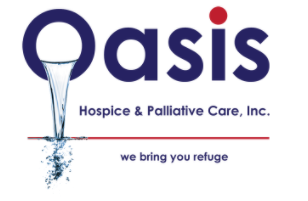Oasis Hospice offers the best services for caring for terminally ill cancer patients at home. For more information and assistance, call (708) 564-4838
When you have lung cancer, both the disease and its treatment can harm your quality of life. You may require further assistance in coping with extreme pain, nausea, exhaustion, depression, or other symptoms. It can assist in alleviating such symptoms and enhancing your daily life. It is a collection of therapies that help you feel better and manage your disease and treatments. It is available at any stage of your condition. Additionally, you may hear it referred to as supportive care.
How Does It Assist
This unique form of medical treatment can assist you in resolving lung cancer-related concerns such as the following:
- Experiencing pain as a result of your tumor or cancer procedure
- Anxiety, stress, depression, or guilt
- Chemotherapy, radiation, or other types of treatment-related complications
- Breathlessness
- Not receiving sufficient oxygen
- Nausea
- Appetite loss
- Constipation
- Fatigue\sConfusion
- Loss of weight
If your cancer is incurable, you can receive palliative care to alleviate your suffering and improve your quality of life. However, this form of treatment is not reserved for hospice patients or those nearing the end of their lives. You can obtain it whenever you require it.
Lunger Cancer End of Life
It’s tough to know what to expect when one’s life nears the end. Caregivers’ responsibilities may vary depending on the patient’s location. Providing care at home instead of a hospital or hospice facility may entail additional obligations. It’s true that lung cancer is an end of life care.
Death Warning Signs
Cancer usually kills after several weeks or months of weakness and exhaustion. It’s not always possible to forecast someone’s lifespan. However, several typical indications and symptoms indicate a person’s end-of-life. Knowing what to expect reduces worry and improves planning.
Signs and symptoms indicating a cancer patient may be entering their final weeks include:
- Weakness and fatigue grow.
- There is a constant need to sleep, often spending the day in bed or resting.
- Having only a few individuals nearby and limited guest time.
Signs and symptoms of end-of-life include:
- Slow breathing with significant gaps between breaths.
- Noisy breathing with congestion and gurgling or rattling sounds as the throat becomes clogged. Others may be concerned, but the dying individual is unaware.
- Cool, bluish-dusky skin, especially on hands and feet; dry mouth and lips.
- Less urine production.
- This is typical and common. It only concerns if the hallucinations alarm or distress the sick person.
- Traveling, preparing for travel, or being welcomed by the dead are common themes.
- Of course, everyone is unique. Signs and symptoms differ between individuals. Signs and symptoms may appear in a different order.
Concluding tissue fluids can assist the sick person feel more at ease. Here are some broad comforting guidelines:
- Make beds and chairs more comfortable with foam or an eggshell mattress.
- Encourage frequent position changes.
- Change bedsheets at least twice a week, if needed.
- Elevate the person’s head or turn them onto their side to assist them in breathing easier.
- Keep the person warm with blankets. Electric blankets can cause burns.
- Remind the person of the time, place, and people present. It may help relieve confusion. It may not help someone with a mental disorder.
- Severe pain often prevents a person from dying peacefully. Cancer causes discomfort in numerous ways, but it can be managed. Uncontrolled pain typically exacerbates weariness and confusion.
Understanding What Happens Immediately After Death
Muscles relax, breathing stops, the heart stops beating, and there is no pulse. Even when death is inevitable, caretakers can experience shock and bewilderment. A natural death should be reported to home health or hospice staff and the person’s doctor. Usually, no emergency medical attention is required. Many people find it soothing to sit quietly with a loved one, holding hands or simply watching them relax.
Who Should Acquire It
Anyone diagnosed with lung cancer is eligible for palliative treatment to alleviate pain, difficulty breathing, exhaustion, or worry. Seek palliative treatment as soon as possible to ensure the most significant outcome.
Palliative treatment is also available to family members and loved ones. Counseling may assist them in coping with their stress or concerns. They can also seek guidance on approaching difficult decisions about your cancer treatment or end-of-life care. How to do lung cancer palliative care at home?
What Is Included
There is no one-size-fits-all approach to lung cancer palliative care. If you do not obtain enough oxygen, you can get exhausted and feeble. Palliative care therapies such as surgery can assist you in breathing more easily. Your doctor may drain some of the fluid from your lungs (a procedure known as a pleural tap or thoracentesis) or insert stents to keep your airways open. It can assist you in breathing in enough oxygen.
Lung cancer develops when cells undergo mutations and expand uncontrollably, generating a tumor, lesion, or nodule mass. Tumours of the lung can begin anywhere in the lung. Tumors can be malignant or benign. Once a cancerous lung tumor has grown, it may shed cancer cells or may not. These cells can be taken away in the bloodstream or float in lung tissue fluid, termed lymph.
Lymph runs through tubes called lymphatic vessels that drain into lymph nodes, the tiny bean-shaped organs that aid in infection resistance. Lymph nodes are distributed throughout the body, including the lungs, the chest center, and other areas. Because the natural direction of lymph flow out of the lungs is toward the center of the chest, lung cancer frequently spreads there initially.
Recognize Palliative Care
Its primary objective is to alleviate symptoms, pain, and tension. The aim is to enhance the quality of life for you and your family. It is appropriate for patients of any age and at any stage of illness and can be used with curative treatment.
Symptoms and Treatment of Lung Cancer—How Palliative Care Can Assist
When chemotherapy is used to treat lung cancer, palliative care can help control nausea, vomiting, discomfort, exhaustion, constipation and diarrhea, depression, and insomnia. Radiation therapy for lung cancer can make eating difficult and pain and fatigue. All of these symptoms are treated by palliative care professionals.
Palliative care might be beneficial in reducing pain following surgery. Additionally, it can assist in reducing anxiety in a variety of methods, including medicine, massage, relaxation, and guided imagery. Anxiety, worry, and melancholy are common reactions to a lung cancer diagnosis.
Around 85 percent of cases of lung cancer are caused by cigarette smoking. As a result, patients frequently blame themselves for developing the condition and believe it might have been averted. Palliative care can assist patients in exploring these emotions to find acceptance and serenity. Palliative care providers can assist you and your family with future planning. They’ll help you in communicating with family and friends. Additionally, they will assist you in matching your treatment objectives to available therapy options.
Palliative care social workers are critical in assisting you in developing a discharge plan that suits your and your family’s needs. They help both you and your family. The palliative care team is first and foremost concerned with ensuring that you and your family live life to the fullest from the time of diagnosis on.

